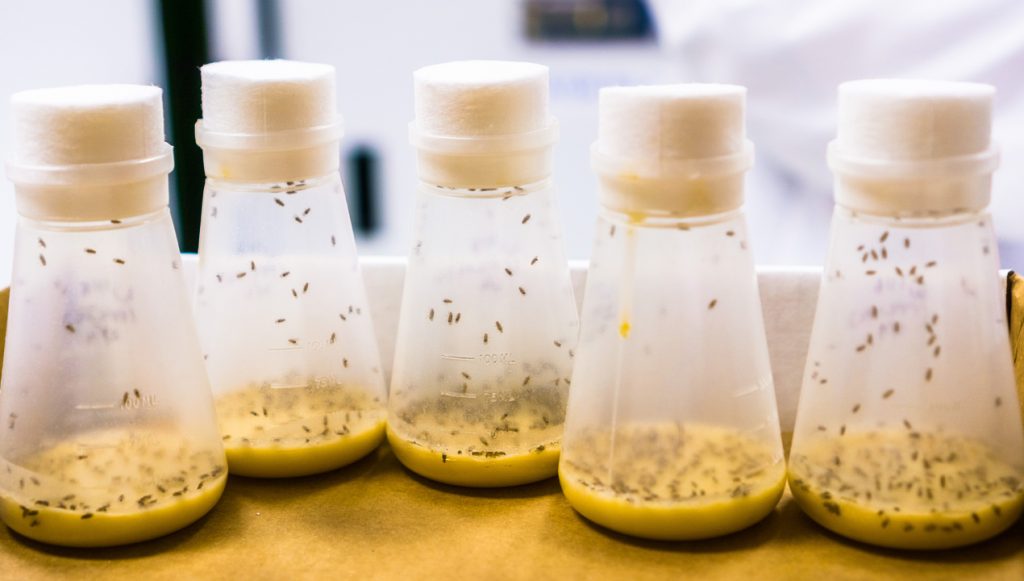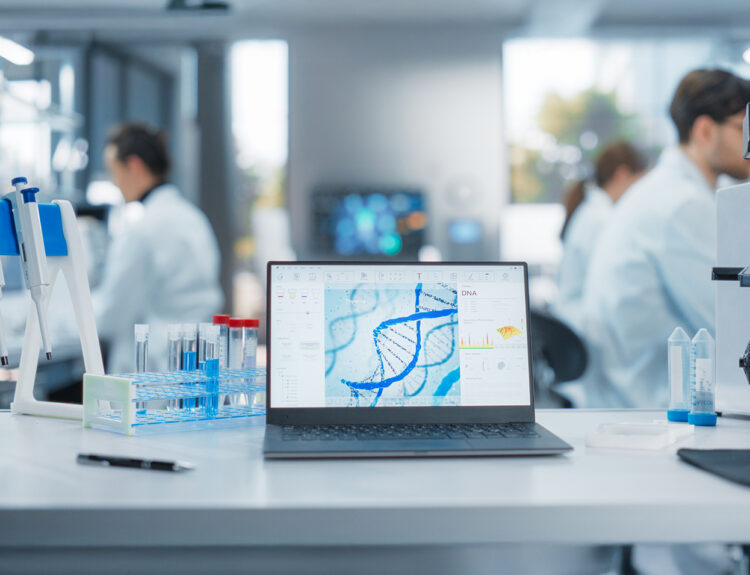Fruit flies, scientifically known as Drosophila melanogaster, have long been cherished as a valuable model organism in scientific research. The model organisms’ characteristics such as small size, short life cycle and remarkable genetic similarities to humans make them ideal candidates for a wide range of studies. From fundamental genetics to organ development, fruit flies have provided invaluable insights into various scientific fields. However, despite their numerous advantages, there are still a few challenges that healthcare professionals and researchers encounter when working with these tiny creatures. Let us explore those challenges and the strategies to overcome them.
Fruit Flies in Biomedical Research Challenges:
-
Limited translatability to human physiology:
One of the main challenges that researchers face when studying fruit flies is the limited translatability of the findings to human physiology. While fruit flies share many genes with humans, their physiology and anatomy differ significantly. This divergence may hinder the direct application of certain findings from fruit fly studies to human medical advancements.
-
Vertebrate-specific pathogenic factor:
One clear disadvantage of using fly models is the possibility of overlooking pathogenetic factors that are specific to vertebrates, potentially leading to incomplete understanding of certain diseases. For instance, immunological disorders like multiple sclerosis cannot be convincingly modeled in Drosophila melanogaster due to the absence of key vertebrate-specific immune mechanisms. Additionally, the lack of blood vessels and limited presence of primitive hemocytes in fruit flies restrict the analysis of conditions such as brain infarcts and hemorrhages. It is important to acknowledge that while Drosophila models can capture certain aspects of human diseases, the inherent differences between mammals and invertebrates present potential limitations when it comes to modeling brain diseases.
-
Absence of an adaptive immune system:
Unlike vertebrates, fruit flies lack the specialized immune cells and molecular components that are responsible for the adaptive immune response, including the production of antibodies and antigen-specific memory. This limitation restricts the study of immune-related diseases and the evaluation of specific immune responses in fruit flies.
-
Complicated drug delivery and lack of the blood-brain barrier:
Fruit flies have a different anatomy and physiology compared to humans, making drug delivery challenging. The administration routes commonly used in fruit fly experiments, such as direct injection or feeding, may not accurately replicate the complex absorption, distribution, metabolism and excretion (ADME) processes that occur in humans. Consequently, the pharmacokinetics and pharmacodynamics of drugs in fruit flies may not fully mirror those in humans, leading to limited predictive value. Fruit flies lack a fully developed blood brain barrier, which limits their ability to accurately model the permeability and transport of drugs across this critical barrier. Consequently, drug effects on the central nervous system (CNS) may differ between fruit flies and humans.
-
Ethical Considerations:
In medical and scientific research, ethical considerations play a pivotal role. While fruit flies are often considered “lower-order” organisms, ethical concerns may still arise when performing experiments that involve genetic manipulation, drug testing or other invasive procedures.
-
Limited Disease Modeling:
Although fruit flies have been instrumental in deciphering the genetic basis of various diseases, their applicability in disease modeling is limited for certain complex human conditions. While fruit flies can be used to study basic mechanisms and genetic factors associated with diseases, the lack of certain organs and physiological complexities limits their capacity to fully replicate complex diseases found in humans. Consequently, researchers must carefully extrapolate and validate their findings in more advanced models before translating them to human applications.
While the difficulties associated with using fruit flies as model organisms cannot be completely eliminated, there are several strategies and approaches that healthcare professionals and researchers can adopt to address these challenges.

Approaches to Overcome the Challenges
-
Bridging the translational gap:
To enhance the translational value of fruit fly research, scientists can employ complementary model organisms and experimental approaches. By validating findings in more complex models, such as mice or zebrafish, researchers can confirm the relevance of fruit fly discoveries to human biology. Collaborative efforts between different research groups working on different model organisms can facilitate the integration of diverse perspectives and increase the reliability of findings.
-
Alternative models:
Researchers should prioritize ethical considerations when using fruit flies for experimentation. They can explore alternative models, such as cell cultures, organoids or other in vitro systems, for specific studies that raise ethical concerns or require a higher degree of human relevance. These alternative models can provide valuable insights while minimizing the use of live animals.
-
Complementing with advanced disease models:
For diseases with complex human pathophysiology, fruit flies can be used in conjunction with more advanced disease models, such as animal models or human-derived cell cultures. By combining different model systems, researchers can gain a comprehensive understanding of the disease mechanisms and validate potential therapeutic interventions. This approach can help bridge the gap between fruit fly studies and human diseases.
-
Genetic manipulation:
Researchers can genetically modify fruit flies to express specific human immune system components or key signaling molecules involved in adaptive immunity. This approach allows for the investigation of certain aspects of adaptive immune responses in fruit flies, although the level of complexity may not fully mimic that of vertebrates.
-
Modified fruit fly models:
Researchers can employ alternative drug delivery methods that better simulate human routes of administration, such as creating fly models with functional equivalents of human target organs or developing microfluidic devices that mimic human physiological conditions. These approaches can enhance the relevance of drug exposure and absorption in fruit flies, improving the predictive value of drug efficacy and toxicity studies. Researchers can develop modified fruit fly models with a functional blood-brain barrier or use techniques that allow the investigation of drug penetration into the fly central nervous system.
Fruit Flies in Biomedical Research: Key Points
Fruit flies have undoubtedly revolutionized various scientific disciplines, offering unique advantages as model organisms. Despite the limitations of fruit flies as model organisms for humans, researchers can adopt innovative strategies to address these challenges.By adopting these strategies, doctors and researchers can mitigate the difficulties associated with fruit fly research and maximize the benefits derived from using them as model organisms. Embracing a multidisciplinary and collaborative approach will lead to more robust and reliable scientific advancements while minimizing the limitations inherent to fruit fly studies.
We value your input and opinions. Do you believe our information is comprehensive and accurate? We welcome your thoughts and insights to contribute to the ongoing dialogue in the biomedical industry. Additionally, we invite you to share your perspectives on the fascinating world of fruit flies and their significant contributions to scientific research. Your comments can help shape the future of biomedical advancements.
Register now with MDforLives and start sharing your comments

MDForLives is a vibrant community of healthcare professionals and patients dedicated to shaping the future of healthcare. We provide valuable global insights to healthcare companies through online surveys, interviews, and discussion forums.






